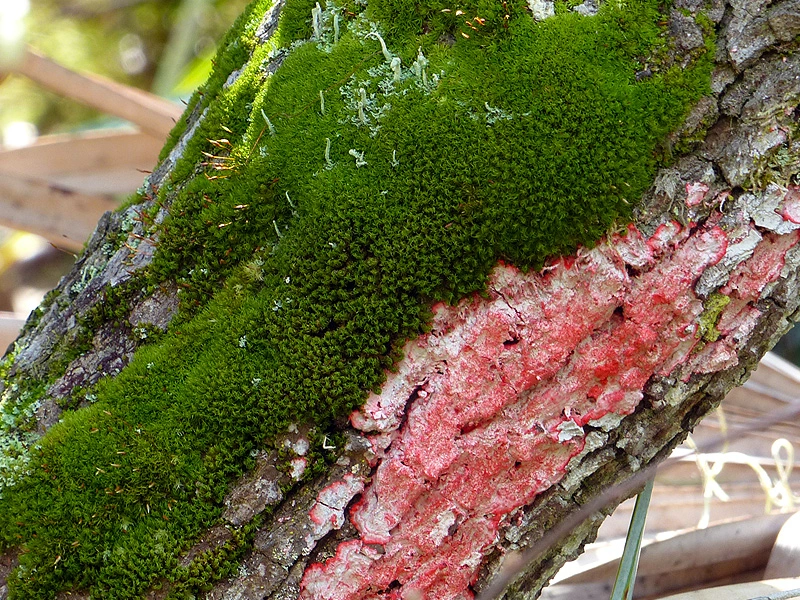
The lichens were looking lovely when we visited south Oslo Riverfront Conservation Area (SORCA) to check out the epiphytic Florida butterfly orchids (Encylia tampensis) on June 27, 2020. Lichens do not harm the plant (or other surface) on which they grow.
Lichens are a mutually beneficial alliance of a fungus (or fungi) and an alga. The alga, known as the photobiont, does photosynthesis and supplies sustenance. The fungus, called the mycobiont, provides structure, protection, and a means of holding water.
Lichens come in a variety of colors and forms. They are characterized as foliose (leafy), fruiticose (shrubby), crustose (crusty), squamulose (scaly), leprose, gelatinous, filamentous, byssoid, (wispy-wooly), or structureless.
A crustose lichen, Christmas wreath lichen (Herpothallan rubrocinctum) is the showiest and brightest of the many lichens that we see at ORCA, The red pigment contains chlodectonic acid and is thought to act as a sunscreen. The more sunshine, the redder the lichen.
So, it can be very whitish, as seen below at SORCA …

Or, quite, quite red as shown below growing near the reflection pond at Bok Tower Garden…

Most lichens prefer places with moist conditions and often can be found growing along with mosses …

Especially when it is round in shape it is easy to understand why it is called the Christmas wreath lichen …

Other common names include red baton lichen, rouge lichen, Christmas lichen, red soldier lichen, or just red lichen. Whatever you call it, this lichen is a striking sight to see.
